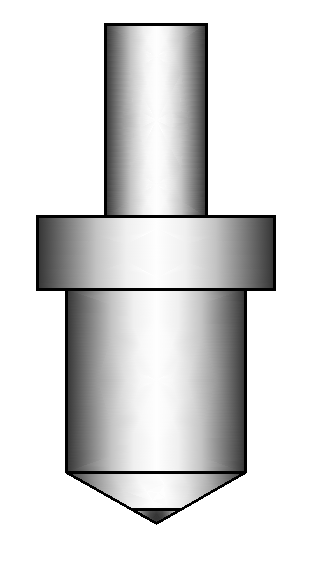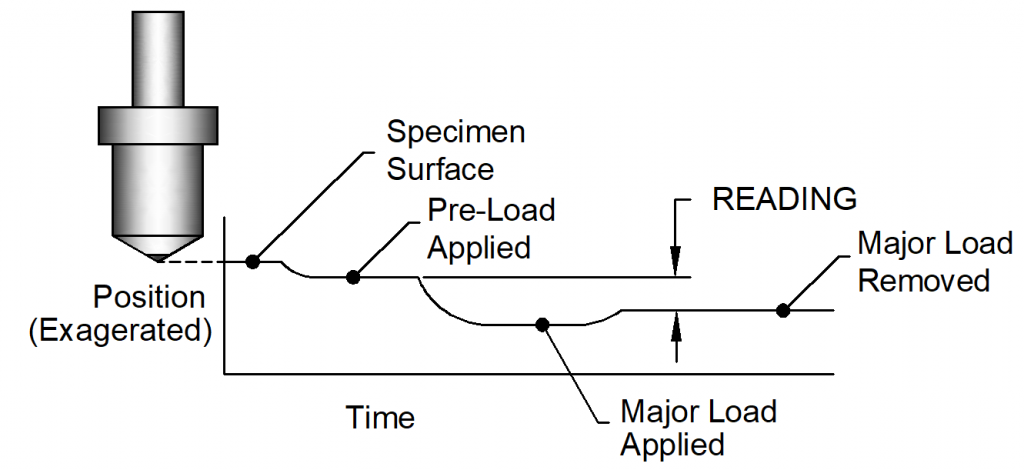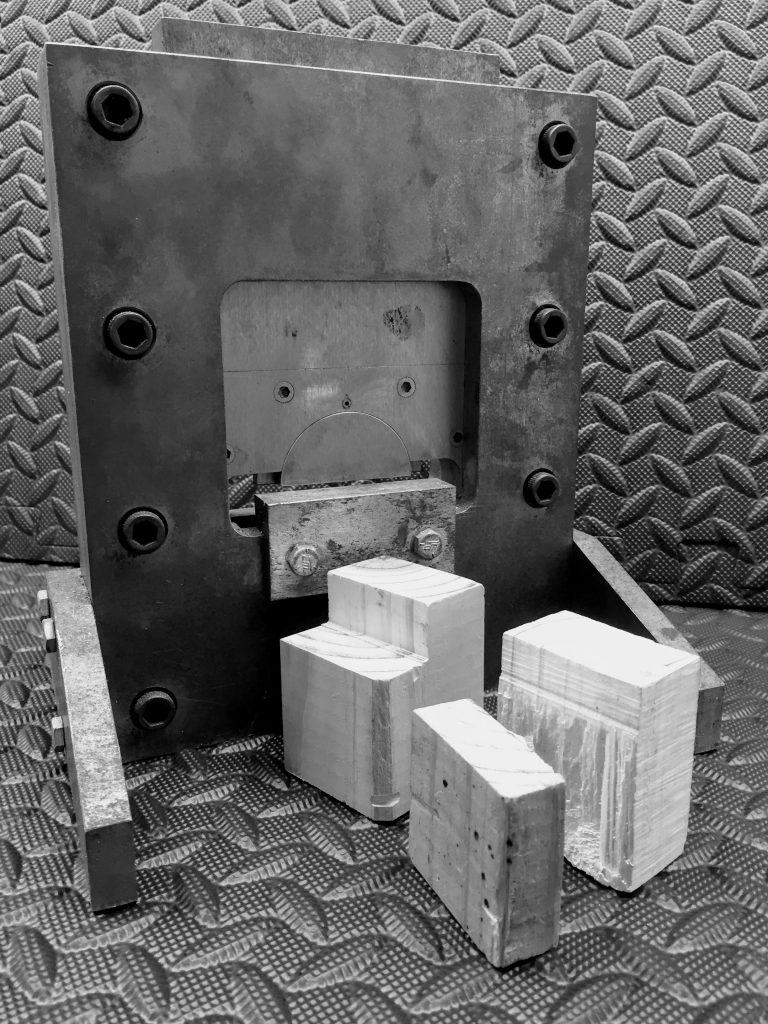- Introduction
- Tensile Testing
- Compression Testing
- Hardness Testing
- Shear Testing
- Impact Testing
- Transverse Rupture
Introduction
Tensile Testing
Video: Tensile Testing and the Stress Strain Diagram
Testing Setup (See ASTM E8 / E8M – 09 Standard Test Methods for Tension Testing of Metallic Materials)
- Specimen
- Grip, attachment
- Extensometer
- Gage Length
- Cross-Sectional Area of Specimen
Stress Strain Diagram
- Modulus of Elasticity
- Elastic Limit
- Plastic Deformation
- Fracture
- Elongation at Fracture
- Typical Diagrams for Various Materials
- Metal
- Elastomers
- Glass, Ceramic, Concrete
Properties Obtained from the Tensile Test
- Elastic Limit
- Proportional Limit
- Neither of these is easy to measure precisely, so
- .2% Offset Yield Strength
- Yield Point
- Upper Yield Point
- Lower Yield Point
- Stiffness
- Modulus of Elasticity
- E is Young’s Modulus
- Higher E, Stiffer Material
- Tensile Strength
- Top of the stress-strain curve
- Necking is disregarded using engineering stress
- Necking is an indication of ductility
- Poisson’s Ratio
- Relates longitudinal deformation to lateral deformation
Effect of Temperature
Typical Specimens
Fractures
Compression Testing
Compression strength is an important property of tool steels. Punches, dies, and other tooling is often subject to high compressive loads.
Deformation Modes in Compression
- Buckling
- Shear
- Double Barreling
- Barreling
- Uniform Compression
- Compressive Instability
Hardness Testing
Macroindentation
- Brinell Hardness
- Rockwell
- Vickers
Microindentation
- Knoop
Brinell Hardness Test (ASTM E10)
5 or 10 mm Ball Indenter under 500-3000 kgf load, indentation measured with a microscope.
Hardness load divided by surface area of indentation.
Rockwell Hardness Test (ASTM E18)
- A series of scales (A, B, C…H)
- Steel 1/16 or 1/8 ball, or diamond tip brale.
- Application of 10 kg Minor Load
- Application of Major load
- Major load removal -> reading depth of penetration
e.g., C scale is brale indentor, 150kg major load.
(Example reading is RC 60)

Rockwell Test Sequence

Vickers Hardness Test (ASTM E92)
Uses a 136 degree diamond pyramid and loads between 1 and 120 kg.
Value is load divided by surface area.
Advantages
- A single scale for all values
- Simple
- Fast
- Little surface prep
- Small marks
- Inexpensive
Knoop Hardness Test (ASTM E384)
- Elongated pyramidal indenter
- Uses Vickers machine
- Can be used where other hardness tests cannot fit.
- Tests can be conducted closer together.
- Can be used on thin coatings.
Disadvantage in conversion.
Other Hardness Tests
- Durometer
- File “Test”
Hardness Conversions (ASTM E140)
Shear Testing
For examples of shear testing standards, see:
- ASTM F606 – Section 3.8
- ASTM B831 – Thin Aluminum Alloys
- ASTM D732 – Plastics by Punch tool
- ASTM D4255 – Polymer Matrix Composites
- ASTM D5379 – Composite Metals
- ASTM D7078 – Composite Materials
Shear stress builds up on a plane parallel to the forces acting on the specimen. Shear testing for clear timber can be conducted in accordance with ASTM D143 (shown below).

Impact Testing
See ASTM E23
Impact testing is a way to evaluate a materials ability to absorb energy. This quantity is known as toughness and is expressed in units of energy per unit volume. Toughness is seen on a material’s stress-strain diagram as the area under the curve. A tough material is one that combines a high tensile strength with the ability to deform plastically. One of the most common ways to evaluate toughness is to break a specimen of standard dimensions with a freely swinging hammer and measure the energy absorbed by the struck specimen.
Charpy (Charpy V-Notch or CVN) and Izod tests
Toughness
Absorbed Energy
Lateral Expansion
Shear Fracture Appearance
V-Notch, U-Notch
Un-notched PM Specimens
Transverse Rupture Strength
See ASTM B406
Some brittle materials, such as cemented carbides are sensitive to the alignment of grips used in tensile testing. A common alternative to tensile strength for these materials is their transverse rupture strength. In this test, a sample is place across two carbide cylinders and a load is applied to the center of the sample.
Transverse rupture strength is a type of flexural strength.



Recent Comments